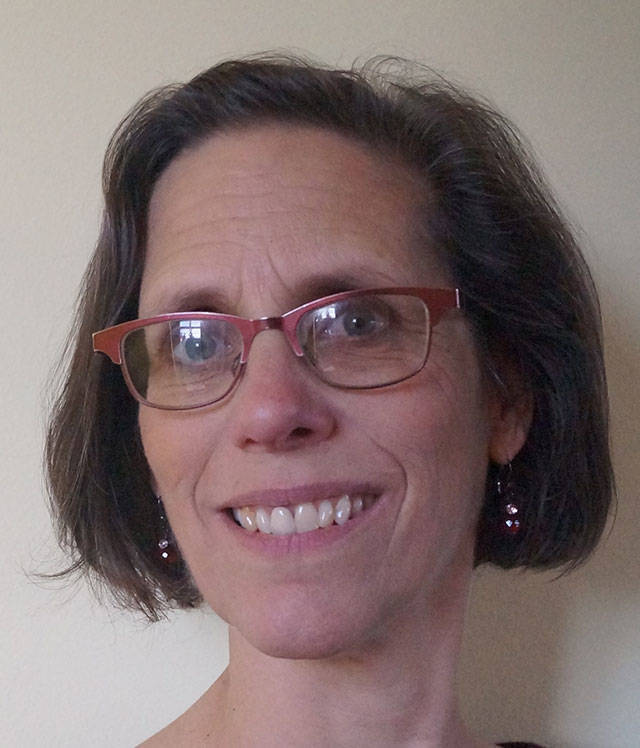I recently read a piece about an ornithologist who cycled across the country sporting two signs strapped to the back of his bike: “Black Lives Matter” and “Birds Spark Hope.” Scott Edwards is a zoology professor at Harvard University. He’s Black. And according to the article I read, he ended his trip feeling good about the American people, about their generosity and thoughtfulness. He also saw a lot of birds.
I was deeply touched by this account – about a Black man, a birder, who felt hopeful as he biked across the country at a time of racial unrest and mounting evidence that birds are in a precipitous decline. It made me question my own sense of despair, a despair that has only deepened in the last few weeks as the smoke from raging forest fires has thickened.
But his signs also resonated with me. Yes, Black lives matter. In my work supporting public defenders in King County, I witness their relentless fight to end racist structures in the criminal legal system (pre-trial bail, incarceration for crimes of poverty, harsh penalties that keep people – disproportionately Black – in cages for decades). I see that they sometimes win, that they’re making a difference, that they’re fierce and effective.
And in the evening, when I shut off my computer and head into the woods, I see birds. And always, they lift my spirit.
I have made my way through this pandemic watching and listening to birds. For the past five years, my husband and I have kept a record of avian arrivals and milestones in a special notebook that sits in our kitchen. This year, the second spring of COVID, it became a kind of obsession.
I knew spring was upon us when the white-crowned sparrows start singing from the tops of fence posts (“oh, pretty, pretty me!”). I marked the day I saw the season’s first rufous hummingbird, a feisty little animal whose arrival from Mexico we celebrated by filling our feeders with sugar water.
I particularly rejoiced when the warblers showed up – Wilson’s warblers, orange-crowned warblers, common yellowthroats, and more – colorful birds that are full of verve and grace as they glean bugs from newly leafed branches.
Then the ospreys arrived, sleek and powerful as they soared over the tops of the towering Douglas firs, and the violet-green swallows, more aerodynamic than any fighter jet at Seafair.
And in May, just when I was beginning to despair that this year we wouldn’t see them, I heard the unmistakable single “wit” of a Swainson’s thrush from the cover of the woods behind our home. Within days, our mornings and evenings were marked by their haunting, melodious song. And thus began a nightly ritual – we’d sit on our back porch and delight with each wit, queep, and whinny and with a song as sweet as that of any flute.
I know birds are in trouble. I know a ground-breaking study marked, for the first time, the extent of their dramatic population declines in North America. I know that the existential threat of climate change is hanging over us as never before. And in my work proximate to public defenders, I know Black people, Indigenous people, and people of color continue to face the harsh impact of a punitive criminal legal system at disproportionately high rates.
And yet, birds spark hope. For me, it’s not a naïve hope that we’ll suddenly realize the mess we’re in and overnight change course. It’s something quieter and more philosophical – a realization that to be human during this time is to hold a kind of dissonance – a steely-eyed awareness of what is happening to our world and, at the same time, a celebration of the life that surrounds us.
It’s a realization that as I go about my business, these other living creatures are right there too, going about theirs. They’re having babies, feeding their young, gleaning for insects, and gathering seeds. They’re alive, and so am I.
During one of my evening walks last week, the haze was especially thick and the woods seemed silent. It felt as if a pall was hanging over us, as though we were holding our collective breath in fear of what might happen next in our tattered world. But as I looked a little more closely, I began to see life unfolding – the quiet activity of birds this time of year, when their young have fledged and they’re taking in the bounty of bugs and seeds.
I saw a juvenile goldfinch flutter its wings and chirp incessantly until a parent appeared, presumably with a seed in its beak to feed this persistent young one. I saw a flock of band-tailed pigeons lift off from a red elderberry where they were no doubt gorging on the tree’s calorie-packed fruit. I saw chickadees, towhees, and a single, gorgeous cedar waxwing sitting near the top of an alder, gazing at who-knows-what. And for a moment, I saw past the haze to a world full of beauty and life.
Leslie Brown, former editor of The Beachcomber, works for the King County Department of Public Defense.



